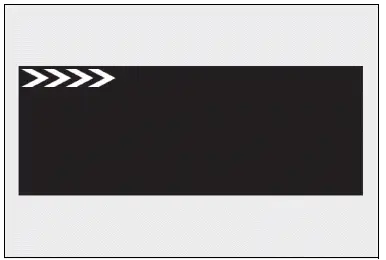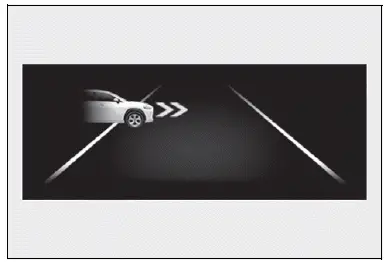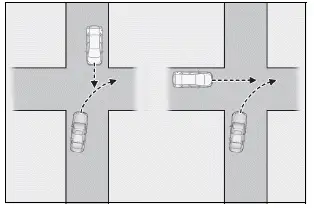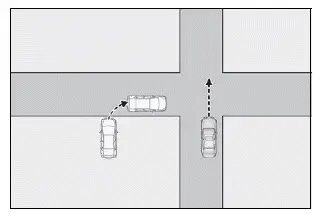Toyota Grand Highlander (AS10) 2024 Owners Manual / Driving / Using the driving support systems / FCTA (Front Cross Traffic Alert)
Toyota Grand Highlander (AS10): FCTA (Front Cross Traffic Alert)
When approaching an intersection, etc., at a low speed, vehicles approaching from the left and right of the front of the vehicle can be detected and the driver informed of these vehicles.
FCTA system control
- When the system detects a vehicle approaching from the left or right in front of your vehicle when approaching an intersection, a notification will be displayed.
- Head-up display

- When the system determines that your vehicle may be about to enter an intersection even though a vehicle is approaching from the left or right in front of your vehicle, a buzzer will sound and a message will be displayed to urge you to depress the brake pedal.
- Multi-information display

WARNING
■For safe use
Driving safely is solely the responsibility of the driver. Pay careful attention to the surrounding conditions in order to ensure safe driving.
The FCTA system is a supplementary system that informs the driver of vehicles approaching from the left and right of the front of the vehicle.
Over-reliance on this system may lead to an accident resulting in death or serious injury.
The details of the warning display may differ from the actual traffic conditions.
Although the warning display will stop being displayed after a certain amount of time, this does not necessarily indicate that there are no longer any vehicles or pedestrians around your vehicle.
■FCTA system operating conditions
The system will operate when all of the following conditions are met:
- A shift position other than P or R is selected
- The vehicle speed is approximately 10 mph (15 km/h) or less
- A vehicle is approaching from the left or right in front of your vehicle at a speed between approximately 7 to 37 mph (10 to 60 km/h)
- There are no vehicles in front of your vehicle
- The accelerator pedal is not being strongly depressed
- The brake pedal is not being strongly depressed
■Situations in which the system may operate even though no vehicles are approaching
In certain situations, such as the following, the system may operate even though no vehicles are approaching:
- When approaching objects on the roadside, such as guardrails, traffic signs, utility poles, street lights, trees, tall grass, walls, etc.
- When passing an object on the side of the road, such as a parked vehicle
- When a vehicle or pedestrian is approaching from the left or right in front of your vehicle in the distance
- When a vehicle or pedestrian is moving within a parking spot, etc., next to the lane your vehicle is in
- When a pedestrian or bicyclist is approaching on a sidewalk
- When a vehicle or pedestrian is moving away from your vehicle
- When an approaching vehicle is decelerating or stops
- When an approaching vehicle makes a left/right turn immediately in front of your vehicle
- When a pedestrian is approaching your vehicle
- When an oncoming vehicle makes a right/left turn
- When your vehicle enters an intersection before a vehicle approaching from the left or right in front of your vehicle
- When stopped at traffic light and a vehicle approaches from the left or right in front of your vehicle
- When making a left/right turn in front of an approaching vehicle

- When an oncoming vehicle approaches and passes
- When being overtaken by another vehicle
- When driving next to another vehicle or a pedestrian
- When a vehicle or pedestrian approaches the side of your vehicle
■Situations in which the system may not operate properly
In situations such as the following, a vehicle may not be detected by a front side radar sensor and the system may not operate properly:
- If an approaching vehicle moves suddenly (sudden steering, acceleration, deceleration, etc.)

- If a vehicle is approaching from the left or right of the front of your vehicle diagonally
- When a vehicle is approaching from the left or right in front of your vehicle in the distance
- When there is an object between your vehicle and an approaching vehicle
- When several vehicles are approaching with little space between them
- Situations in which the sensors may not operate properly
- Situations in which some or all of the functions of the system cannot operate
Changing FCTA settings
- The FCTA can be enabled/disabled through a customize setting.
- The following settings of the FCTA can be changed through customize settings.
Similar pages:
Engine (ignition) switch
Performing the following
operations when carrying
the electronic key on your
person starts the engine or
changes engine switch
modes.
Starting the engine
1. Check that the parking brake
is set.
The parking brake indicator will
come on.
2. Check that the shift lever is in
P.
3. Firmly depress the ...
Unlocking and locking the
power back door from the
outside
■ Smart key system
Carry the electronic key to
enable this function.
Locks all the doors
Check that the door is securely
locked.
Unlocks all the doors
The doors cannot be unlocked for 3
seconds after the doors are locked.
Opening/closing the
power back door
■ Opening/closing the power
bac ...


